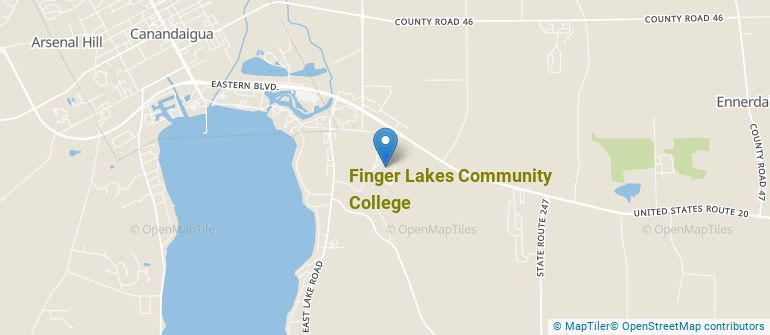Finger Lakes Community College Nursing Programs
Finger Lakes Community College is a public institution situated in Canandaigua, New York. The rural area surrounding Finger Lakes Community College is great for students who love a peaceful atmosphere.
Where Is Finger Lakes Community College?

Contact details for Finger Lakes Community College are given below.
| Contact Details | |
|---|---|
| Address: | 3325 Marvin Sands Drive, Canandaigua, NY 14424-8395 |
| Phone: | 585-394-3500 |
| Website: | www.flcc.edu |
How Do I Get Into Finger Lakes Community College?
You can apply to Finger Lakes Community College online at: www.flcc.edu/apply
Can I Afford Finger Lakes Community College?
Student Loan Debt
Almost 66% of college students who graduated with the class of 2018 took out student loans, but that percentage varies from school to school. At Finger Lakes Community College, approximately 53% of students took out student loans averaging $5,584 a year. That adds up to $22,336 over four years for those students.
The student loan default rate at Finger Lakes Community College is 0.3%. This is significantly lower than the national default rate of 10.1%, which is a good sign that you'll be able to pay back your student loans.
Finger Lakes Community College Undergraduate Student Diversity

Gender Diversity
Of the 2,205 full-time undergraduates at Finger Lakes Community College, 42% are male and 58% are female.

Racial-Ethnic Diversity
The racial-ethnic breakdown of Finger Lakes Community College students is as follows.

| Race/Ethnicity | Number of Grads |
|---|---|
| Asian | 19 |
| Black or African American | 215 |
| Hispanic or Latino | 199 |
| White | 1,618 |
| International Students | 0 |
| Other Races/Ethnicities | 154 |
Finger Lakes Community College Nursing Concentrations
The table below shows the number of awards for each concentration.
| Major | Associate’s | TOTAL |
|---|---|---|
| Registered Nursing | 50 | 50 |
| TOTAL | 50 | 50 |
References
*The racial-ethnic minorities count is calculated by taking the total number of students and subtracting white students, international students, and students whose race/ethnicity was unknown. This number is then divided by the total number of students at the school to obtain the racial-ethnic minorities percentage.
More about our data sources and methodologies.
